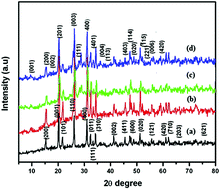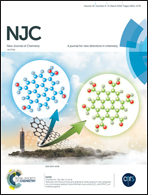Effect of Al doping concentration on the structural, optical, morphological and electrical properties of V2O5 nanostructures
Abstract
Study on the optoelectronic characteristics of a cation-substituted nanostructure is a specific area of recent interest for a wide range of photonic applications. In the present work, AlxV2O5 (where x = 0, 5, 10 and 15%) nanoparticles were synthesized by a wet chemical-calcination process. X-ray diffraction study revealed the orthorhombic phase of 600 °C heat-treated pure and Al3+ substituted samples. The shifting of the XRD lines with the substitution of V2O5 suggests that Al3+ was successfully introduced into the V2O5 host lattice. The SEM and TEM images show that the pure and Al3+ doped V2O5 hierarchical architectures are formed of one-dimensional nanorods. Photoluminescence spectra demonstrated the increment in deformities revealed by the immensely enhanced green emission. DC conductivity studies were performed in the temperature range 30–130 °C and it was found that the activation energy (Ea) is higher for AlxV2O5 than for the undoped sample. The inherent current (I)–voltage (V) characteristics of pure V2O5 and AlxV2O5 junction diodes showed a nonlinear diode-like behavior. The transient photocurrent under illumination is higher than the dark current, indicating that the fabricated diodes behave as a photodiode.



 Please wait while we load your content...
Please wait while we load your content...